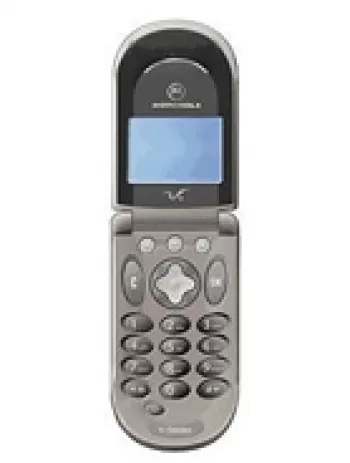
Overview of Motorola W160
The Motorola W160 is a classic feature phone announced in October 2007, designed to cater to users who needed basic communication features without the complexities of a smartphone. Although its launch was eventually cancelled, it remains an interesting piece of technology history. The W160 was intended to be an entry-level phone with fundamental functionalities aimed at making communication accessible and straightforward. In this article, we delve into the specifications, features, design, and intended functionality of this device.
Network Capabilities
The Motorola W160 was designed to operate on GSM technology, which was the standard for mobile communications during its intended release period. It supported GSM 900/1800 bands, ensuring usability in various regions worldwide that operated on these frequencies. However, the device did not support more advanced data capabilities like GPRS or EDGE, reflecting its basic role as a voice-centric phone rather than a data processing device.
Design and Build
With dimensions of 114 x 43 x 14 mm and weighing 85g, the Motorola W160 was compact and easy to handle. Its lightweight characteristic made it extremely portable and convenient for daily use, fitting easily into pockets. The phone's build was robust, adhering to the practical design language of the time. The nature of its simplistic design was to make it accessible and user-friendly, especially to those who were not particularly tech-savvy.
Display Quality
The display of the W160 featured a monochrome graphics screen with a resolution of 128 x 128 pixels. This was typical for feature phones of that era, focusing on clear visibility in various lighting conditions. Despite lacking color display, the monochrome screen was energy-efficient, contributing to the phone's long battery life. The simplicity also meant less screen clutter, focusing strictly on essential information.
Memory and Storage
The internal storage was quite minimal at 20 KB, with no available card slot for expansion. This storage level was adequate for storing essential contact information and call records. The phonebook could hold up to 100 numbers, and the device maintained logs of 10 dialed, 10 received, and 10 missed calls. These features were sufficient for users who primarily required basic telephony functions without the need for extensive multimedia or app storage.
Sound Features
Sound-wise, the Motorola W160 was equipped with a loudspeaker, supporting downloadable polyphonic ringtones which were quite popular in that era. While it lacked a 3.5mm headphone jack, the inclusion of FM radio specifically in the W160 variant provided a form of entertainment and access to music and news directly through the device.
Communication Features
The W160 was focused on delivering basic communication. It did not incorporate modern connectivity options like WLAN, Bluetooth, or advanced positioning systems. Instead, SMS messaging was the primary non-voice communication feature available. The lack of internet browsing capabilities aligned with the device's purpose to facilitate straightforward and affordable communication.
Entertainment and Utilities
For entertainment, the Motorola W160 came pre-loaded with three games, providing a basic level of diversion for users. These games were likely simple and designed to run efficiently on the limited hardware of the phone. The absence of Java capabilities further underscored the device's simplicity and role as an uncomplicated communication tool.
Battery Performance
The phone came with a removable Li-Ion battery, a common choice for feature phones due to their excellent power retention and ability to be easily replaced. It promised an impressive standby time of up to 465 hours and a talk time of up to 9 hours and 50 minutes, ensuring long-lasting performance between charges, which was especially beneficial in areas with limited access to electricity.
Availability and Pricing
The Motorola W160 was announced but eventually cancelled before hitting the market. However, it was anticipated to be available in black and priced around 20 EUR. This pricing tier highlighted its role as a budget-friendly device. Its low cost was likely intended to attract users in developing markets or users in need of a secondary, no-frills mobile device.
Cultural and Market Impact
Although the W160 never officially launched, its conception reflected the market demand of the time for affordable and easy-to-use mobile phones. It represented a segment of the market that valued function over form and simplicity over complexity. While today’s smartphones offer advanced computing power and connectivity, devices like the W160 served a distinct purpose; they provided essential communication tools without the modern distractions of app-based economies. Such phones continue to inspire the design of current low-cost devices developed for similar purposes and audiences.
Main Features of Motorola W160
- Lightweight design (85 g)
- Compact dimensions (114 x 43 x 14 mm)
- FM radio for entertainment
- Long battery life with up to 465 hours of standby time
- Extended talk time of up to 9 hours and 50 minutes
- Monochrome graphics display with 128 x 128 pixels resolution
- Affordable price (About 20 EUR)
- Includes 3 pre-loaded games for leisure
- Support for 100 phonebook entries
- SMS messaging capability
- Includes a loudspeaker for better audio
- Comes with USB 1.1 port
Disadvantages of Motorola W160
- No GPRS or EDGE support for data connectivity.
- Cancelled status and not officially released.
- Monochrome display, which limits graphical capabilities.
- No external memory card slot for expanded storage.
- Very limited internal memory of 20 KB.
- No camera functionality.
- Lacks 3.5mm audio jack, limiting audio output options.
- No Bluetooth or WLAN for wireless connectivity.
- No GPS positioning feature.
- No built-in web browser.
- No support for Java applications.

View Also
More Phones
All Rights Reserved +14266 Phones © Mobilawy 2025

























